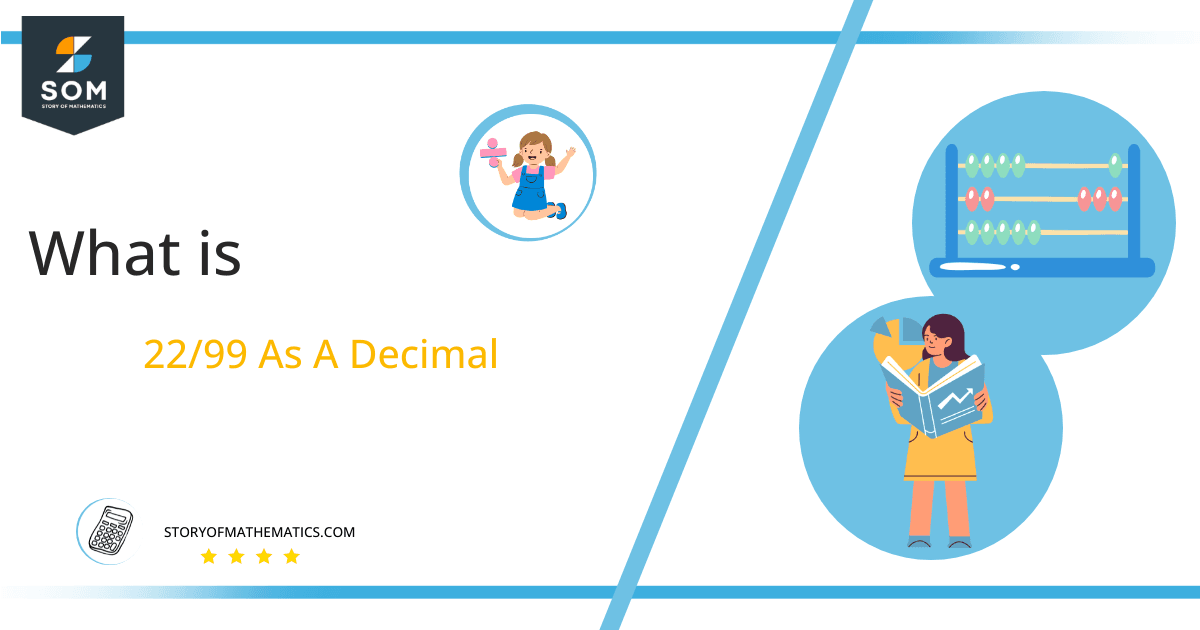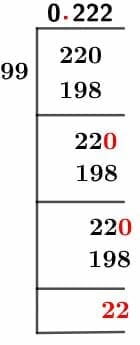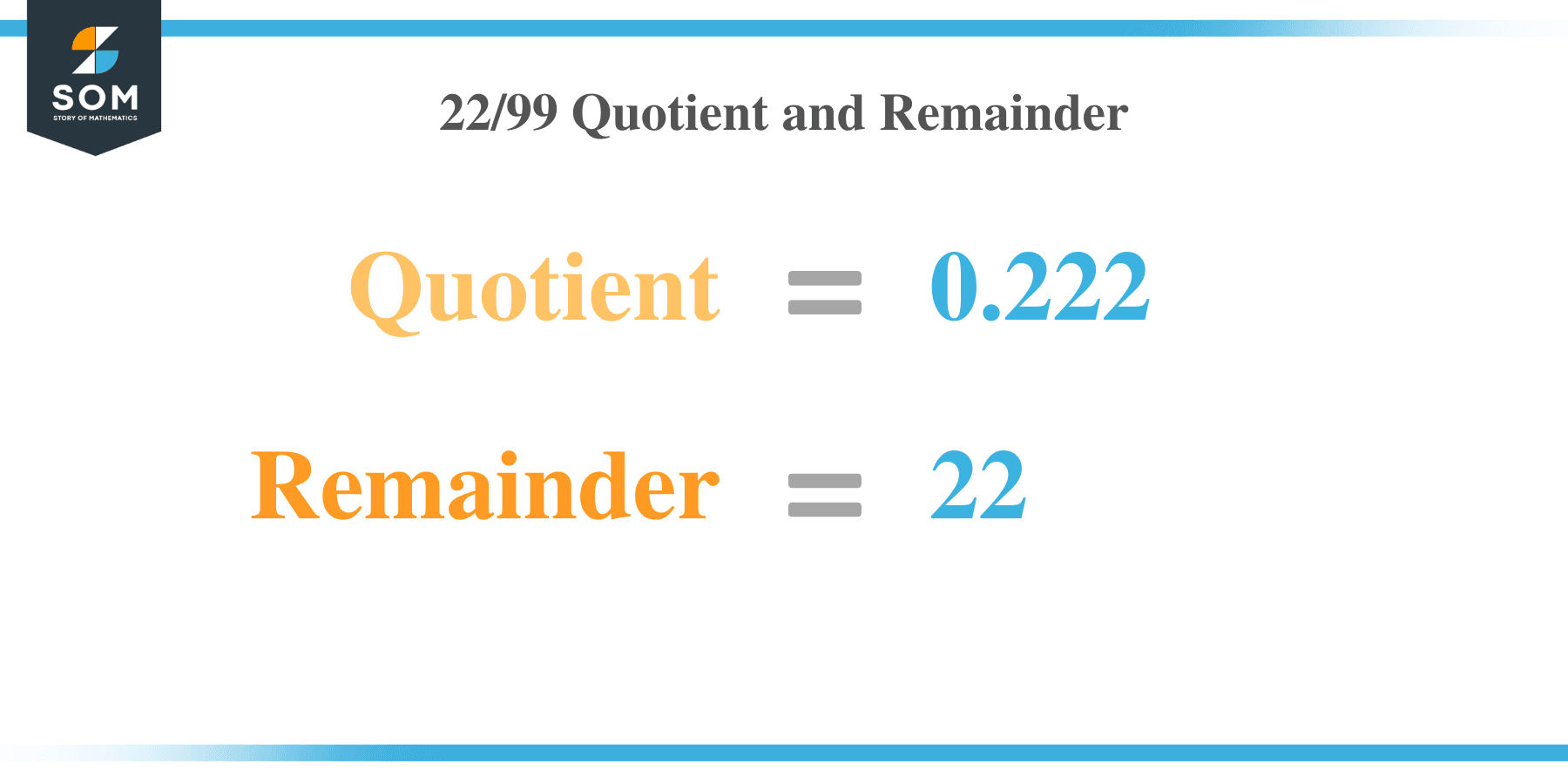What Is 22/99 as a Decimal + Solution With Free Steps
The fraction 22/99 as a decimal is equal to 0.222.
Fractions are used to represent the portions contained by a thing. The fractions can be converted to their decimal forms for easy processing. Decimals can be terminating and non-terminating.
In non-terminating decimals, there are further two types. Recurring that contain digits occurring periodically and non-recurring with no repeating digit. The fraction gives a non-terminating and recurring decimal because the digit ‘2‘ repeats infinitely in the decimal.
Here, we are more interested in the division types that result in a Decimal value, as this can be expressed as a Fraction. We see fractions as a way of showing two numbers having the operation of Division between them that result in a value that lies between two Integers.

Now, we introduce the method used to solve said fraction to decimal conversion, called Long Division, which we will discuss in detail moving forward. So, let’s go through the Solution of fraction 22/99.
Solution
First, we convert the fraction components, i.e., the numerator and the denominator, and transform them into the division constituents, i.e., the Dividend and the Divisor, respectively.
This can be done as follows:
Dividend = 22
Divisor = 99
Now, we introduce the most important quantity in our division process: the Quotient. The value represents the Solution to our division and can be expressed as having the following relationship with the Division constituents:
Quotient = Dividend $\div$ Divisor = 22 $\div$ 99
This is when we go through the Long Division solution to our problem. Figure 1 contains the long division process for the fraction under study.

Figure 1
22/99 Long Division Method
We start solving a problem using the Long Division Method by first taking apart the division’s components and comparing them. As we have 22 and 99, we can see how 22 is Smaller than 99, and to solve this division, we require that 22 be Bigger than 99.
This is done by multiplying the dividend by 10 and checking whether it is bigger than the divisor or not. If so, we calculate the Multiple of the divisor closest to the dividend and subtract it from the Dividend. This produces the Remainder, which we then use as the dividend later.
Now, we begin solving for our dividend 22, which after getting multiplied by 10 becomes 220.
We take this 220 and divide it by 99; this can be done as follows:
220 $\div$ 99 $\approx$ 2
Where:
99 x 2 = 198
This will lead to the generation of a Remainder equal to 220 – 198 = 22. Now this means we have to repeat the process by Converting the 22 into 220 and solving for that:
220 $\div$ 99 $\approx$ 2
Where:
99 x 2 = 198
This produces another Remainder equal to 220 – 198 = 22. Now we must solve this problem to Third Decimal Place for accuracy, so we repeat the process with dividend 220.
220 $\div$ 99 $\approx$ 2
Where:
99 x 2 = 198
Finally, we have a Quotient generated after combining the three pieces of it as 0.222, with a Remainder equal to 22.

Images/mathematical drawings are created with GeoGebra.
